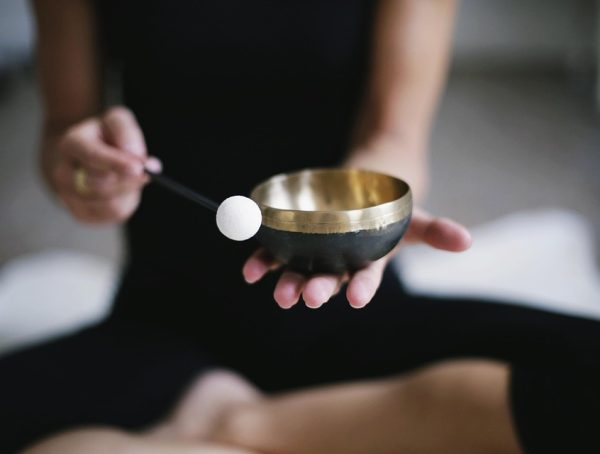Meditation 101: Discover 9 Innovative Types of Meditation
In today’s fast-paced world, the quest for inner peace and mental clarity has led many to explore meditation. This ancient practice, rooted in various cultures and philosophies, has evolved into a myriad of forms, each offering unique benefits. Whether you’re new to meditation or seeking to expand your practice, this article introduces nine innovative types of meditation and offers actionable steps to incorporate them into your daily life.
1. Mindfulness Meditation
Description: Mindfulness meditation focuses on cultivating awareness of the present moment, allowing thoughts, emotions, and sensations to come and go without judgment.
Action Steps:
- Choose a quiet space and sit comfortably.
- Set a timer for 5-10 minutes to start.
- Close your eyes and focus on your breath. Notice the rise and fall of your chest.
- When distractions arise, acknowledge them and gently bring your focus back to your breath.
2. Guided Visualization
Description: Guided visualization harnesses the power of imagination to create a peaceful scene or environment in your mind, promoting relaxation and mental clarity.
Action Steps:
- Find a comfortable position, either sitting or lying down.
- Listen to a guided visualization recording, or visualize a peaceful landscape (e.g., a beach, forest, or mountaintop).
- Engage all your senses: imagine the sounds, smells, and textures of this calming place.
3. Loving-Kindness Meditation (Metta)
Description: This practice involves directing love and kindness toward oneself and others, fostering compassion and emotional well-being.
Action Steps:
- Sit comfortably and close your eyes.
- Begin by establishing kind wishes for yourself (e.g., “May I be happy. May I be healthy.”).
- Gradually extend these wishes to friends, family, and eventually all living beings.
4. Transcendental Meditation (TM)
Description: TM employs a mantra—a specific word or phrase—repeated silently to settle the body into profound rest, transcending thought.
Action Steps:
- Learn a mantra (many find it beneficial to be taught by a certified TM instructor).
- Sit comfortably and repeat your mantra silently for about 15-20 minutes, twice a day.
- Focus on the sound of the mantra and allow other thoughts to fade away.
5. Body Scan Meditation
Description: This technique involves a gradual examination of each part of the body, promoting relaxation and physical awareness.
Action Steps:
- Lie down in a peaceful environment and close your eyes.
- Starting from your toes, focus on each body part, acknowledging any tension.
- Breathe into each area as you mentally release tension and stress.
6. Zen Meditation (Zazen)
Description: Practiced sitting in stillness, Zen meditation emphasizes focused attention and intentional breathing.
Action Steps:
- Sit on a cushion or chair, with feet flat on the ground and hands resting on your lap.
- Keep your back straight and your gaze downward.
- Focus on your breath, allowing thoughts to arise without attachment.
7. Chakra Meditation
Description: This practice involves focusing on the body’s energy centers (chakras) to align and balance energy within.
Action Steps:
- Research and understand each of the seven chakras.
- Sit comfortably and visualize the energy at each chakra as you sequentially focus on them from the root to the crown.
- Incorporate affirmations related to each chakra to amplify your intention.
8. Breathwork Meditation
Description: Breathwork combines various techniques to utilize the breath for emotional release and physical relaxation.
Action Steps:
- Find a comfortable seated position.
- Practice a simple technique like the 4-7-8 breathing. Inhale through your nose for 4 seconds, hold for 7 seconds, and exhale through your mouth for 8 seconds.
- Repeat several cycles, noticing any shifts in your mental state.
9. Active Meditation
Description: Active meditation allows for movement as a form of meditation, emphasizing self-expression and connectedness.
Action Steps:
- Choose an activity like yoga, tai chi, or walking meditation.
- Focus on the rhythm of your movements and how they feel in your body.
- Synchronize your breath with your movement, allowing yourself to be fully present.
Conclusion
Meditation is a versatile and powerful tool for enhancing mental clarity, emotional stability, and overall well-being. By exploring these innovative types of meditation, you can discover the practices that resonate best with you, fostering a deeper connection to yourself and the world around you. Start with small, consistent steps, and gradually build your meditation practice. As you explore, remember to be patient and compassionate with yourself on this journey.
Final Uplifting Quote:
"Peace comes from within. Do not seek it without." – Buddha
For more content on mindfulness, self-improvement, and meditation, follow Kevin on Instagram (@KSteineman) and continue your journey toward inner peace!
You might also like
More from Meditation
The Role of Mantras in Transcendental Meditation: A Deep Dive
The Role of Mantras in Transcendental Meditation: A Deep Dive Transcendental Meditation (TM) has garnered a significant following across the globe, …
The Science Behind Meditation: Improving Mental Health Naturally
The Science Behind Meditation: Improving Mental Health Naturally In today's fast-paced world, the pursuit of mental wellness has become paramount. Thousands …
Understanding the 7 Types of Meditation for Beginners
Understanding the 7 Types of Meditation for Beginners: A Path to Inner Peace Meditation has become a popular practice in recent …


































